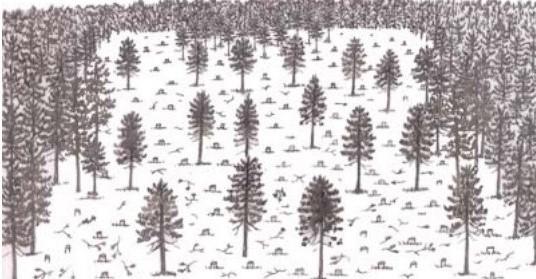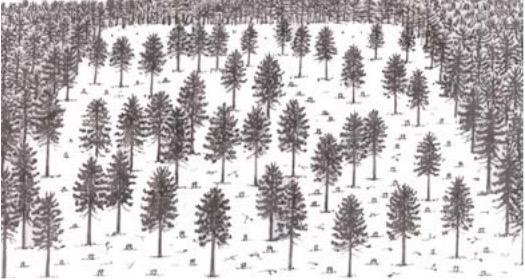We know timber harvesting can be intimidating, but when working with Northland Habitat and our partners, we will make sure we have the right logger and will oversee the project, so it lines up with your goals for the harvest. It all starts with the habitat you provide for the widlife on your property, if there isn't enough high quality habitat then the wildlife will travel to wherever there is.
We know the right way to conduct a harvest, and we work directly with the landowner and logger to make sure any problems are avoided while goals are accomplished. We work for the landowner. Not the logger.
Reasons to conduct a timber harvest:
More than likely your property can benefit from some type of timber harvest or timber stand improvement (TSI). A variety of wildlife depend on young regenerated forests or areas where a large amount of sunlight is hitting the forest floor to stimulate high forage production. Especially here in the north, woody browse from timber improvements can get deer and other wildlife species through a severe winter.
What will the logger be harvesting?
A timber harvest will include a harvest plan that coordinates with the landowner’s goals.
If you choose to harvest your timber, there are some steps you should take. Most people are not familiar with logging or different loggers, so it is advisable to hire a professional forester to handle the following:
Setting up private timber sales is one of Northland Habitat’s services, including all of the items listed above.
When you hire Northland Habitat for your timber sale, we will address all the conditions labeled above and make sure to put the landowner first.
There are multiple types of timber harvests out there, and each one works with the landowner’s goals and objectives.
Timber Harvesting Systems
Types of Timber Harvests
Clearcutting
This harvest involves harvesting all the trees in a stand regardless of their species or marketability. Clearcutting simulates regeneration conditions after a large windstorm, fire, or other disturbance.

Seed Tree or Selective Harvest
This harvest leaves mature trees of desirable species (such as oaks) scattered throughout a harvested stand at pockets close enough to throw seeds to the entire cut area. This thinning allows more sunlight to penetrate the forest floor, which will increase wildlife forage and habitat.

Shelterwood
This harvest involves making two or three cuts in a stand to stimulate advanced regeneration before a final clear cut. In a three-cut system, the first is a heavy thinning that removes undesirable species and poorly formed trees while leaving the best trees with plenty of growing space to expand their crowns, grow aggressively, and produce more seed (acorns). The second cut is a thinning made when there is a good seed crop. It leaves around 50 to 70 percent crown cover but allows enough sunlight to reach the forest floor so that seeds for new desired trees species germinate and survive. Still, it keeps undesired species from taking over. The final cut is made 3 to 10 years after the previous cut when the desirable tree regeneration is well established.

How are the trees cut?
The trees are then processed at the landing and loaded onto a log truck driven to the sawmill.

Information used from Woodland Stewardship: A Practical Guide for Midwestern Landowners, 3rd Edition
